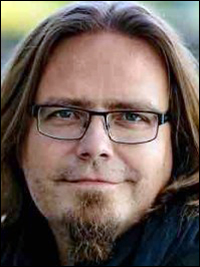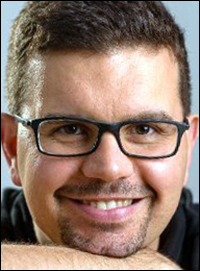Finnish IT solutions company Tieto Corp. is marketing a solution for intelligent buildings that it has deployed at its own facilities, based on Quuppa‘s technology. Since installing the solution at its own headquarters in Helsinki, the company has been able to improve workers’ health while increasing productivity and sales.
The building-intelligence system allows companies to know where their employees or visitors circulate, how facilities are being used, and how to better manage a building or campus and the operations within it. Approximately 10 firms are currently using or testing the solution, including construction company Skanska, the Finnish National Institute for Health and Welfare and transport agency Metropolia.
Tieto provides IT and engineering services to companies around the world, with most of its customers located in Nordic countries. The company employs 13,000 workers and has 50 years of experience in such sectors as oil and gas, forestry, health and the public sector. During the past 18 months, Tieto has been developing, testing and deploying a new Internet of Things (IoT)-based IT service and automatic data-collection system, says Tomi Teikko, the company’s intelligent construction director. The first Tieto building-intelligence system, known as MyOffice, was deployed by several companies this year.
MyOffice consists of Tieto’s cloud-based software, mobile applications, Quuppa locators, tags to transmit data to those locators, and infrared sensors to detect the presence of individuals at desks or other specific locations. The goal, the company reports, is to enable a business to understand how its space is being used, both in real time and historically. In this way, employees can determine where their colleagues are located at any given time, which meeting rooms are occupied and which areas might require maintenance. Managers can understand more about how a space is being used and how it can be made more efficient.
The company started the MyOffice installations at home. It purchased its Helsinki facility last year, at a site previously occupied by Nokia, and installed the MyOffice system to help track the movements of individuals around the building. The overall goal, Teikko explains, “was to help people work in more flexible and modern ways to support ad hoc work.”
For the installation, the company deployed 500 Quuppa locators around the building that allow the firm to identify the location of an individual to within a few meters. Employees and visitors all use LD6T tags, while some Quuppa asset tags have been attached to employees’ bikes and other items. Eighty percent of the staff wear badges (the use of which is voluntary), totaling approximately 1,600 workers.
Quuppa’s LD6L locators, installed in ceilings, provide coverage around office areas. The company’s LD7L locators, designed for outdoor use or installation in rooms with ceiling heights greater than 12 meters (39.4 feet), can be mounted laterally on walls in areas such as Teito’s large atrium.
Quuppa provided assistance in installing and commissioning the system at Tieto’s own facilities, according to Fabio Belloni, Quuppa’s co-founder and general manager, while Tieto now runs facilities on its own customer sites. “We helped them to activate and train their organization,” Belloni explains, “and after that, they’re managing independently.” Tieto also deployed infrared sensors in each area, in order to detect when a person is at a given desk.
As an individual enters the building, his or her tag identification number is captured by the Quuppa locators, which have integrated Bluetooth transceivers and antennas. The locators transmit data to a server, where Quuppa Positioning Engine (QPE) software identifies their location by measuring the angles of the transmissions as received by the locators. This information can then be forwarded to the MyOffice software, to be matched with an individual and site-related data.
For example, if an individual enters a conference room, the software updates that room’s status as busy and displays that data for users of the application, or for those who have logged into the software. If another worker seeks a particular co-worker, he or she can view in the software where that person is and thus attend the same meeting.
In addition, the technology can be used by security, maintenance and cleaning personnel. The addition of infrared sensors to the desks can make this information even more granular, by identifying if someone is sitting at a specific desk. The MyOffice application can also be used to create orders, such as requesting cleaning service for a specific area, or maintenance on a printer or lamp, based on an individual’s location.
What’s more, Teikko says, the technology can incorporate other sensor data, such as temperature levels. For example, if temperature sensors were integrated with the solution, employees could view the average temperature on an office map and thereby identify the best spot at which to work.
The greatest benefit to employees, Teikko says, is a reduction of unnecessary administrative tasks, such as booking conference rooms, as well as the greater comfort and convenience of finding the best workplace and locating co-workers. When Tieto Corp. relocated to the new site and deployed the MyOffice solution, the company indicates, employee sick days were reduced by 10 percent. The firm is now producing more business innovations, Teikko says, noting, “We had the best sales and bottom line profits in four or five years.”
At present, Tieto is exploring the possibility of testing the building-intelligence solution for structures containing health facilities or schools. Quappa’s beacons are being deployed with a variety of partners worldwide, Belloni says, and the company’s intelligent-location systems are used at more than 600 installations throughout 39 countries—the technology, he adds, is scalable for complex environments.



